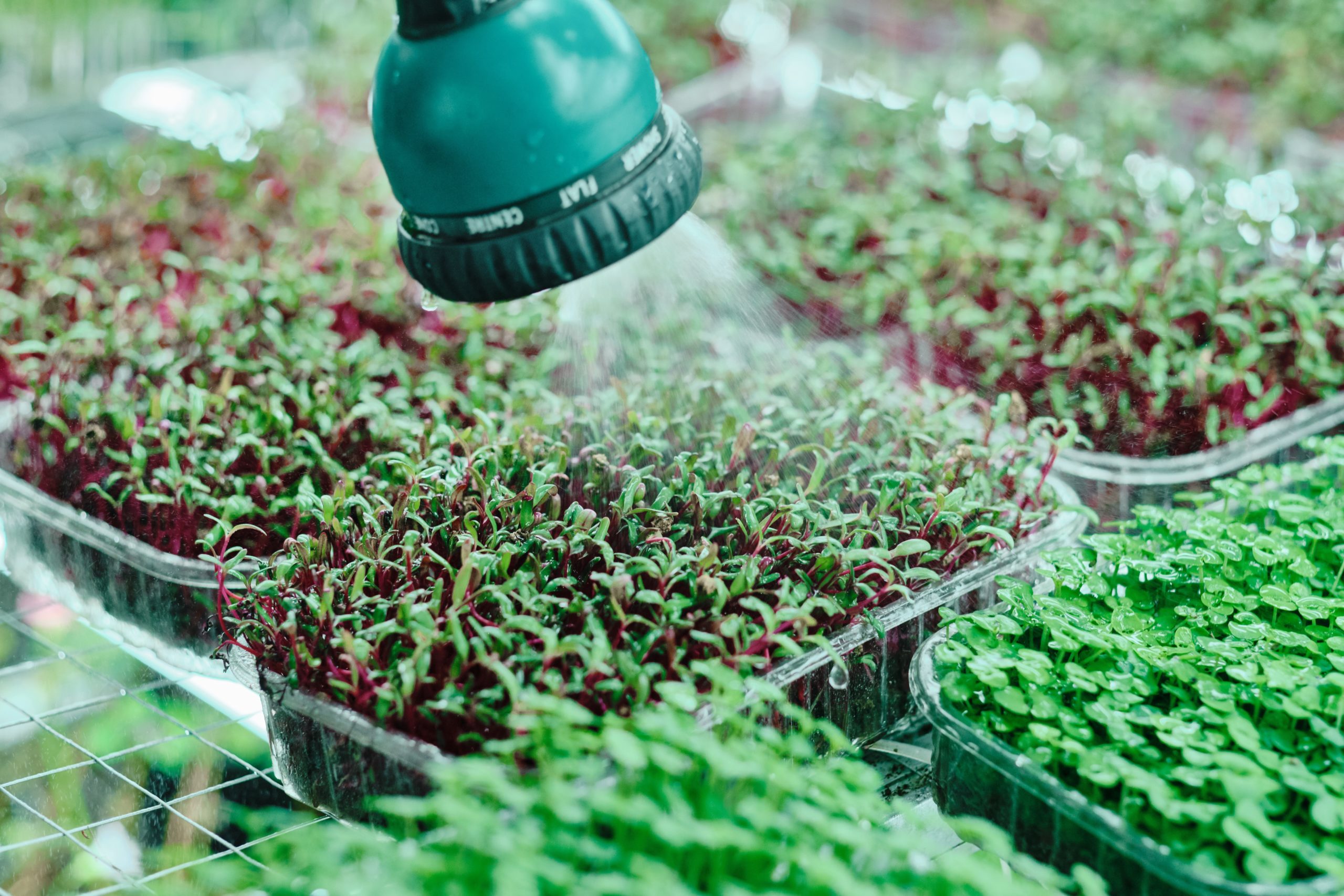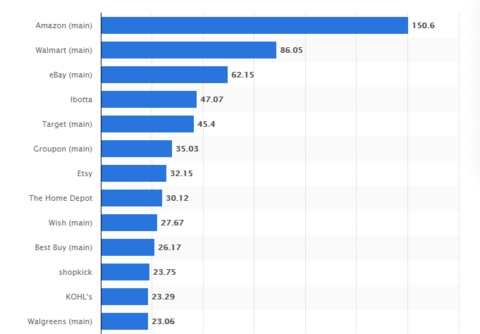What are microgreens?
A microgreen is a young, tender plant that grows in a short time. It can be eaten raw or cooked. When they are first appearing, they resemble tiny green shoots, so they are also known as sprouts. Microgreens are rich in vitamins, minerals, and nutrients.
One of the best parts is that you don’t have to wait for them to grow big before eating them. Instead, you can eat them right out of the garden when they are still small.
Nutritional Value Of Microgreens
The microgreens grow in a few weeks and provide a high level of nutrition. Due to their eight amino acid content, they are perfect for vegetarians. Moreover, they contain antioxidants, which help prevent the effects of free radicals on our bodies. Antioxidants are essential for maintaining health and preventing disease.
These microgreens also contain lots of fiber, making them heart-healthy. Fiber keeps us full longer, so we tend not to overeat. No one microgreen has the most nutritional value, as all have different nutritional profiles.
For example, Broccoli has more calcium than any other microgreen. Radish is high in vitamin C and B6 and calcium and magnesium. And beet greens are loaded with iron.
Health Benefits Of Microgreens

Eating microgreens provides several health benefits. For starters, they’re low in calories and fat. In addition, they’re rich in vitamins, minerals, and antioxidants.
Moreover, they contain a lot of dietary fiber to feel full for a more extended period. In addition, they’re a good source of folate, potassium, and zinc. Folate is essential for brain development, while potassium helps regulate blood pressure and maintain fluid balance. Zinc is necessary for growth and immune function.
If you’re concerned about getting enough vegetables in your diet, microgreens are a fantastic way to do it. They’re super easy to grow at home, and they provide plenty of nutrition. Here are some of the significant health benefits of eating microgreens-
Protection From Heart Disease
Eating microgreens will keep your heart healthy. A study published in Nutrition Journal showed that people who consumed more greens had lower cholesterol levels. This may be due to greens’ high fiber content, which lowers cholesterol levels.
Other studies found that eating greens reduced the risk of cardiovascular disease. In addition, fiber has been proven to lower bad LDL cholesterol (LDL) and raise good HDL cholesterol (HDL).
Boosting Immunity
Eating microgreens boosts immunity because of their antioxidant properties, protecting cells from oxidative stress. When oxidizing agents are imbalanced with antioxidants, oxidative stress occurs. Free radicals cause cell damage, leading to cancer, diabetes, arthritis, Alzheimer’s, and other chronic illnesses. Eating microgreens will help prevent these problems.
Protect Against Cancer
Antioxidant compounds in microgreens can help prevent cancer. For example, research published in the Nutrition Journal found broccoli sprouts effectively contained colon cancer. Radish sprouts are effective in treating leukemia in another study.
Prevent Diabetes
Diabetes is on the rise around the world. According to the World Health Organization, over 400 million people worldwide suffer from this condition. The American Diabetes Association says that 1 out of every 11 adults has diabetes.
One of the leading causes of diabetes is obesity. Obesity leads to insulin resistance, which results in elevated blood sugar levels. To avoid this problem, eat microgreens regularly.
Promote Weight Loss
Studies show that people who consume green leafy vegetables such as spinach, kale, collards, and lettuce lose weight faster than those who don’t. One reason is that these foods are rich in chlorophyll, which increases metabolism. Chlorophyll also promotes satiety, meaning you feel less hungry.
In addition, research shows that eating microgreens reduces appetite. It may be because of their bitter taste or their ability to stimulate digestion.
Improve Skin Conditions
Microgreens contain nutrients that help promote healthy skin. Vitamin K, for instance, is needed to form bones, while vitamin E helps maintain healthy hair and nails. Both of these vitamins are abundant in microgreens.
Vitamin E also fights free radical damage linked to premature aging. Other nutrients include folic acid, biotin, lutein, zeaxanthin, beta carotene, calcium, iron, magnesium, phosphorus, potassium, sulfur, copper, manganese, and zinc.
Help Prevent Infections
Microgreens contain antimicrobial properties that fight infections. Antimicrobials destroy harmful bacteria, viruses, fungi, and parasites. In addition, some studies have shown that consuming them can boost the body’s natural defenses against colds, flu, and stomach ulcers.
They’re also helpful in treating urinary tract infections. Microgreens contain phytochemicals and plant chemicals that work similarly to antibiotics. Phytochemicals kill bacteria by altering their DNA structure, causing them to malfunction.
Fight Inflammation
Inflammation is a normal response to injury or infection. However, inflammation can become excessive if not appropriately controlled. Many diseases are associated with chronic inflammation, including heart disease, stroke, type 2 diabetes, rheumatoid arthritis, asthma, multiple sclerosis, and others.
A large number of white blood cells called macrophages cause inflammation. These cells produce inflammatory substances that irritate tissues and lead to pain and swelling.
To reduce inflammation, eat microgreens daily. They contain anti-inflammatory compounds that inhibit the production of pro-inflammatory cytokines. Pro-inflammatory cytokines increase during acute inflammation.
Boost Immune System
Eating microgreens helps build up your immune system. Studies suggest that they improve the function of T cells, B cells, monocytes, neutrophils, dendritic cells, natural killer cells, and other immune cells.
These cells help protect you from bacterial, viral, fungal, parasitic, and other pathogens. They also prevent cancerous cells from growing.
Microgreens Frequently Asked Questions
What are the top 5 microgreens?
What are the benefits of eating microgreens?
Do microgreens regrow after cutting?
Can you eat raw microgreens?
What is the healthiest microgreen?
Which is the tastiest microgreen?
Is quinoa a microgreen?
What is the difference between microgreen seeds and regular seeds?
Can I eat microgreens every day?
Can you cook microgreens?
Are microgreens a superfood?
What happens if you don’t harvest microgreens?
Can I reuse soil for microgreens?
Is it better to grow microgreens in soil or water?
Can you get food poisoning from microgreens?
How do you clean microgreens?
Which is healthier, sprouts or microgreens?
Are microgreens better than spinach?
What is the difference between microgreens and sprouts?
How do you store microgreens?
Can you grow chia seeds as microgreens?
How are lentils a microgreen?
How do flax microgreens grow?
What is the best soil for microgreens?
Can I grow microgreens with regular seeds?
How many hours of light does a microgreen need?
Can I overeat microgreens?
Should you eat microgreen roots?
What do microgreens taste like?
Are microgreens just baby plants?
Can any plant be a microgreen?
How much should I sell my microgreens for?
How do you sterilize the soil for microgreens?
What is the difference between microgreens and hydroponics?
Do you eat the stems of microgreens?
Are microgreens grown hydroponically?
Can you eat cucumber microgreens?
Can I freeze microgreens?
How do I know when microgreens are ready?
Are broccoli microgreens healthy?
Are sunflower sprouts microgreens?
Is baby kale a microgreen?
Is Arugula a microgreen?
Can you eat microgreens raw?
Do I need to wash my microgreens?
Can microgreens make you sick?
How long do chia microgreens take?
Can you use dried beans for microgreens?
Do you need dirt for microgreens?
Are any microgreens poisonous?
Can you eat tomato microgreens?
What is micro basil?
Is rocket a Microgreen?
What are the top 5 microgreens?
- Arugula (rocket)
- Basil (sweet basil)
- Chives (garlic chive)
- Cilantro (coriander)
- Mint (peppermint)
What are the benefits of eating microgreens?
Eating microgreens has several health benefits such as increasing energy levels, boosting the immune system, improving digestion, preventing cancer, and reducing inflammation. Microgreens also contain high amounts of vitamins A, C, E, K, B1, B2, B3, B5, B6, B9, B12, D, E, folate, calcium, iron, magnesium, phosphorus, potassium, zinc, copper, manganese, selenium, and omega-3 fatty acids.
Do microgreens regrow after cutting?
Unfortunately, No. Most microgreens won’t grow back after cutting. The vast majority of plants won’t grow back at all. A plant’s seed usually only contains enough energy to get the first set of leaves up. If gardeners harvest microgreens without cutting the lowest leaf, a chance exists that it can regrow. However, the regrowth is usually stunted and affects the taste of the microgreen.
Can you eat raw microgreens?
Yes, you can eat raw microgreens. Microgreens are sprouts that grow from seeds. They are usually eaten raw in salads, sandwiches, wraps, and other dishes. The best way to prepare them is to wash them well, then dry them thoroughly.
What is the healthiest microgreen?
Top 6 Healthiest Microgreens-
- Broccoli
- Kale
- Peas
- Radish
- Amaranth
- Arugula
Which is the tastiest microgreen?
Top 4 Healthiest and Tastiest Microgreens-
- Pea Shoots
- Radish Sprouts
- Sunflower Shoots
- Wheatgrass
Is quinoa a microgreen?
Quinoa microgreens are the microgreen versions of the plant that grow out of quinoa seeds. They contain the same nutritional profile as quinoa but have the added vitamins and minerals that come from the greens of the microgreens. And they are quite easy to grow as you grow them similarly to other microgreens.
What is the difference between microgreen seeds and regular seeds?
The major difference between microgreen seeds and regular seeds is that the former have a relatively shorter germination time, which will allow you to grow them faster. Microgreen seeds are also more expensive because there is better quality control and attention to detail when it comes to how they are packaged.
Can I eat microgreens every day?
Microgreens are rich in vitamins and minerals. You should be aware that some vitamins and minerals have a maximum daily dose to prevent bad effects like nausea and diarrhea. Research shows, that you would have to eat 20+ pounds of microgreens a day for a week to reach levels that could cause you any potential life-threatening harm.
Can you cook microgreens?
Cooking microgreens for 15 minutes at 140-180°F will yield at least 75% of their nutrients. Vegetables lose less than 50% of their nutrients when cooked for more than 30 minutes or less. You can certainly eat microgreens raw or cooked. They are easy to add raw to any meal.
Are microgreens a superfood?
Scientists see microgreens as a functional food, which means that they can provide key nutrients in a practical way. Some people call them a superfood.
What happens if you don’t harvest microgreens?
If you don’t harvest the microgreens as they are already too stressed to be able to continue growing and living and will eventually die out. So, in that sense, even if you don’t harvest the microgreens, they will stop growing and eventually die.
Can I reuse soil for microgreens?
After you harvest, microgreens do not grow back. For a continuous supply, you can reuse the soil by turning it over. Sprinkle seeds, and cover with another layer of soil. The roots from the previous crop will have created a mat that will eventually compost itself.
Is it better to grow microgreens in soil or water?
It is better to grow microgreens in soil rather than water. Microgreens cannot actually grow in water alone.
Can you get food poisoning from microgreens?
Microgreens are generally safe to eat raw if grown properly. Microgreens can make you sick through food-borne illness if: the improper seed is used, improper growing conditions lead to mold growth, and unsafe food-handling practices introduce pathogens.
How do you clean microgreens?
Rinse under a gentle stream of water. Use a clean kitchen towel, or paper towels to gently dry your microgreens. Remember, do not store your cut microgreens if they are wet.
Which is healthier, sprouts or microgreens?
Sprouts are better sources of amino acids, pectins, and sugars than microgreens. Microgreens were characterized by a high content of carotenoids and chlorophylls, and organic acid, without any sugars, exhibiting higher anti-diabetic and anti-cholinergic activity than sprouts.
Are microgreens better than spinach?
A bag of organic spinach costs $0.40 – $0.80 per ounce. But spinach microgreens deliver five to forty times more nutrients than mature leaves. So, while you pay three times more per ounce for microgreens vs. vegetable greens, you are getting 10 times the nutrients.
What is the difference between microgreens and sprouts?
- Microgreens are grown in soil. Sprouts germinate in water.
- Microgreens take around one to three weeks to grow, depending on the variety. Sprouts take under a week to grow.
- Microgreens are packed with flavor and are often used as garnishes. Sprouts are great for crunch.
- Microgreens come in a variety. There are limited varieties of a sprout.
How do you store microgreens?
The best way to store microgreens is first to place them between damp paper towels. Next, please put them in a resealable plastic bag or container, and pop them in the fridge. Done! Stored this way, your microgreens will last for about a week.
Can you grow chia seeds as microgreens?
It turns out that chia microgreens are very easy to grow and even better to eat. So let’s set aside the chia pet planter and grow chia microgreens as a crop! You’ll be amazed by the health benefits of chia seeds. They have 3 times the amount of calcium in cow’s milk.
How are lentils a microgreen?
If you soak lentils and let them sit, they will produce a shoot at which point they are considered lentil sprouts. If you let that sprout grow in some soil or other growing medium, they will grow roots and produce leaves at which point those greens are considered a lentil microgreen.
How do flax microgreens grow?
Flax microgreens are tiny plants grown from flaxseeds. The seeds are densely sown on a growing medium, and they’re harvested when the cotyledons have fully emerged, or when a one or two “true leaves” appear. These tiny greens have a vibrant green color and a mild, slightly nutty flavor.
What is the best soil for microgreens?
The best potting soil for microgreens is roughly 80% organic material (peat moss, coconut coir, sterilized compost), mixed with with 20% perlite.
Can I grow microgreens with regular seeds?
Microgreen seeds are no different from regular seeds. They are the same varieties grown in the garden or found in the produce section of the grocery store. So you don’t need special seeds for microgreens. Microgreens can be grown from almost any kind of standard, although some seeds are more recommended than others.
How many hours of light does a microgreen need?
Microgreens need at minimum 6 hours of light but do best when put on a schedule of 18 hours on/6 hours off. Some growers prefer an even 12 on/12 off model but we like extending the light period to encourage faster growth.
Can I overeat microgreens?
It is never a good idea to overeat anything. Similarly, microgreens are full of vital nutrients and minerals. Overdosage of any vitamin or mineral can harm your body. It may cause nausea and diarrhea. However, to avoid such bad effects, make sure you do not eat more than 20 pounds of microgreens daily for a week.
Should you eat microgreen roots?
Technically microgreen roots are edible, but since that is where the most chance of foodborne illness is introduced, it is not recommended.
What do microgreens taste like?
Microgreens come with a huge variety of flavorful tastes including — spicy/peppery, sweet, nutty, mild and earthy, herb-like, and more.
Are microgreens just baby plants?
Microgreens are young plants that are about two weeks old. Baby greens can be the same plants as microgreens, but a bit older. Technically all microgreens are baby greens, but commercially very young baby greens are called microgreens.
Can any plant be a microgreen?
Microgreens can be grown from almost any kind of vegetable or herb seed. Even some grains and grasses can make great microgreens. Different kinds of microgreens can vary a lot in terms of taste.
How much should I sell my microgreens for?
The average selling price for microgreens is $25 – 40 per pound. As for each 1020 tray, the average yield is between 8 oz – 12 oz per harvest (7-14 days). That means you will be able to earn at least $12.5 – $18.8 per tray of microgreens.
How do you sterilize the soil for microgreens?
What is the difference between microgreens and hydroponics?
Hydroponics is a method of growing plants without soil. Whereas microgreens are young vegetables that are grown in soil as well as using hydroponics technique.
Do you eat the stems of microgreens?
Microgreens are more similar to baby greens in that only their stems and leaves are considered edible.
Are microgreens grown hydroponically?
Microgreens grow just as well hydroponically as they do in soil. Growing hydroponically takes practice, but has several advantages and is great for first-time growers and veterans alike.
Can you eat cucumber microgreens?
Yes. You can definitely eat cucumber microgreens. It can easily boost the nutrition level of a meal without changing the taste too much.
Can I freeze microgreens?
You can freeze microgreens, but it will change the flavor, texture, color, and nutrient contents of the microgreens. Freezing ruptures cell walls in microgreens, catalyzing chemical reactions that reduce certain nutrients and boost others.
How do I know when microgreens are ready?
Microgreens are ready to harvest usually two to three weeks after planting, making them a very quick crop for gardeners. Harvest when you see the first set of real leaves. Once leaves appear, snip the microgreens just above the soil line. Serve immediately for the best flavor.
Are broccoli microgreens healthy?
Broccoli microgreens are a fantastic food for children due to many nutrients like vitamins and antioxidants. Broccoli microgreens nutrition can play an essential role in boosting a child’s immune system by protecting against viruses and free radicals.
Are sunflower sprouts microgreens?
Sprouts and microgreens are different stages of a plant. A plant turns microgreen after the stage of sprouting. So sunflower sprouts turns microgreen after a few days when their leaves come out.
Is baby kale a microgreen?
Yes. You can get baby kale as a microgreen if you harvest them at the proper stage of a microgreen.
Is Arugula a microgreen?
Arugula is a very popular microgreen. Also, it’s one of the most simple to grow. It takes about ten days for arugula to go from seed to harvest.
Can you eat microgreens raw?
Raw microgreens are safe to eat, just like any other vegetable, if they’re grown, handled, and processed properly. Microgreens need to be grown in a deliberate and careful way to avoid food borne illness through pathogen growth.
Do I need to wash my microgreens?
You should rinse your microgreens with fresh water after your take them out of the package.
How long do chia microgreens take?
The whole process of growing Chia Microgreens, from soaking to the time to harvest, is remarkably short. Your tiny seeds will grow into healthful plants in just 1-2 weeks!
Can you use dried beans for microgreens?
If a dried bean capable of sprouting, it may also be grown out as microgreens. Some of the most popular ones to grow as microgreens are kidney beans, chickpeas, peas, lentils, mung, adzuki, and soybeans.
Do you need dirt for microgreens?
Yes. Microgreens are harvested so early in their development that they don’t need soil or even nutrient solution. This makes them ideal if you don’t have the space for bags of potting mix and prefer not to deal with the cleanups.
Are any microgreens poisonous?
Buckwheat is a fast-growing microgreen containing a compound called fagopyrin. When eaten in a large amount, these toxic compounds will cause redness, swelling, and a burning sensation in the skin. It causes our skin sensitive to sunlight and can last for days.
Can you eat tomato microgreens?
Tomatoes fall in the nightshade family plants category. It is not recommended to be consumed as microgreens, since nightshade plant sprouts are poisonous.
What is micro basil?
Micro basil is a type of basil that has been harvested when it is very young and the leaves are small. Another name for micro basil is baby basil! They are most commonly used as an herb to add flavor to a variety of dishes, the basil flavor is more concentrated and very delicious.
Is rocket a Microgreen?
Rocket microgreens (also known as Arugula) are the mini versions of the spicy mature leaves. Growing rocket as microgreens gives the same delicious peppery taste as the full-sized grown ones.




